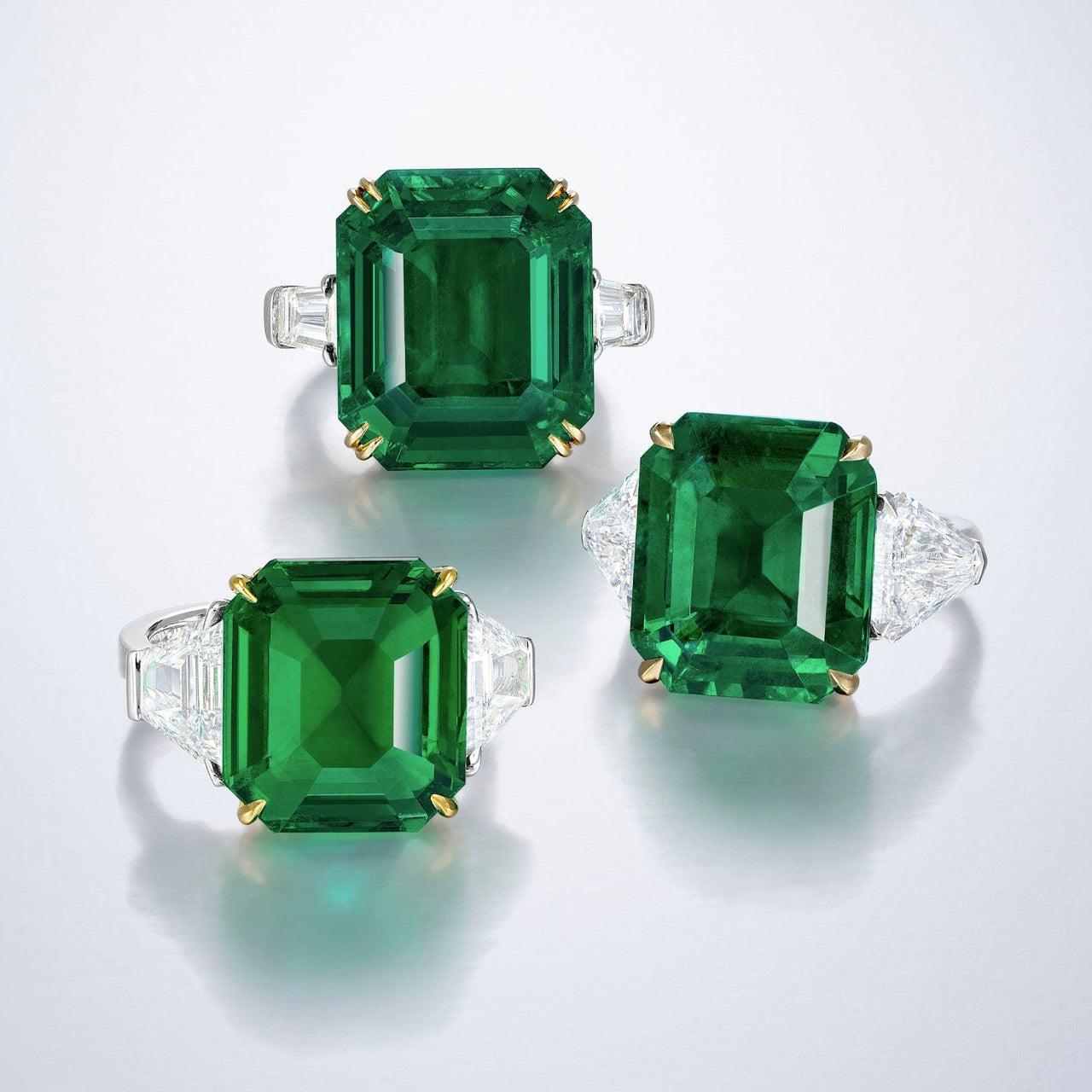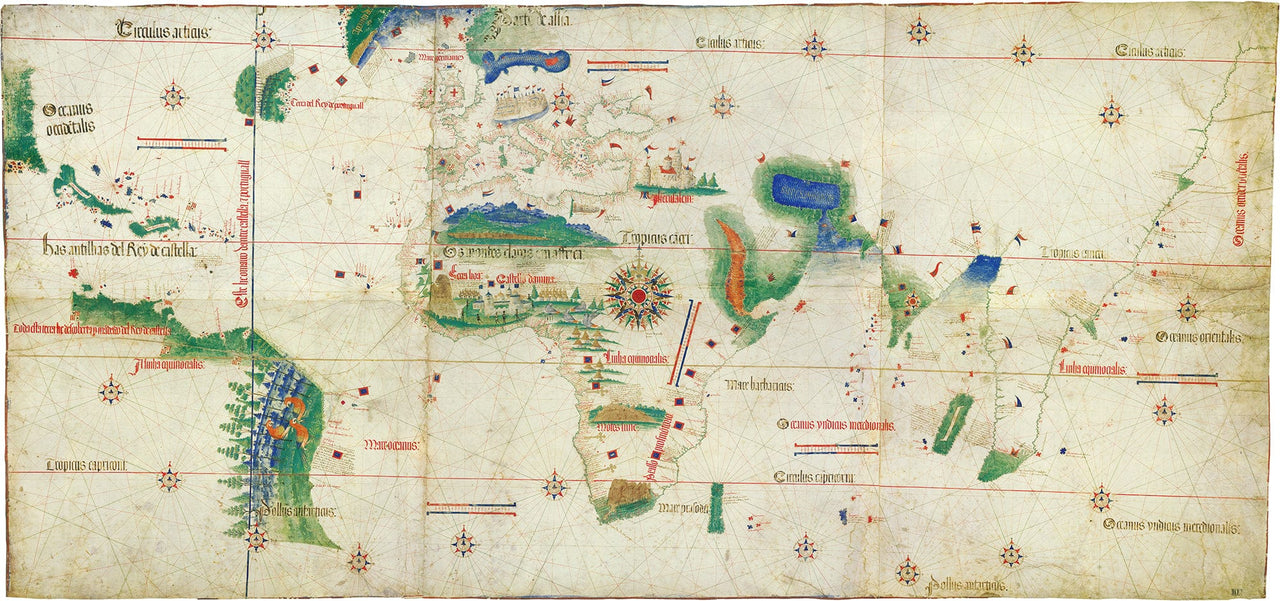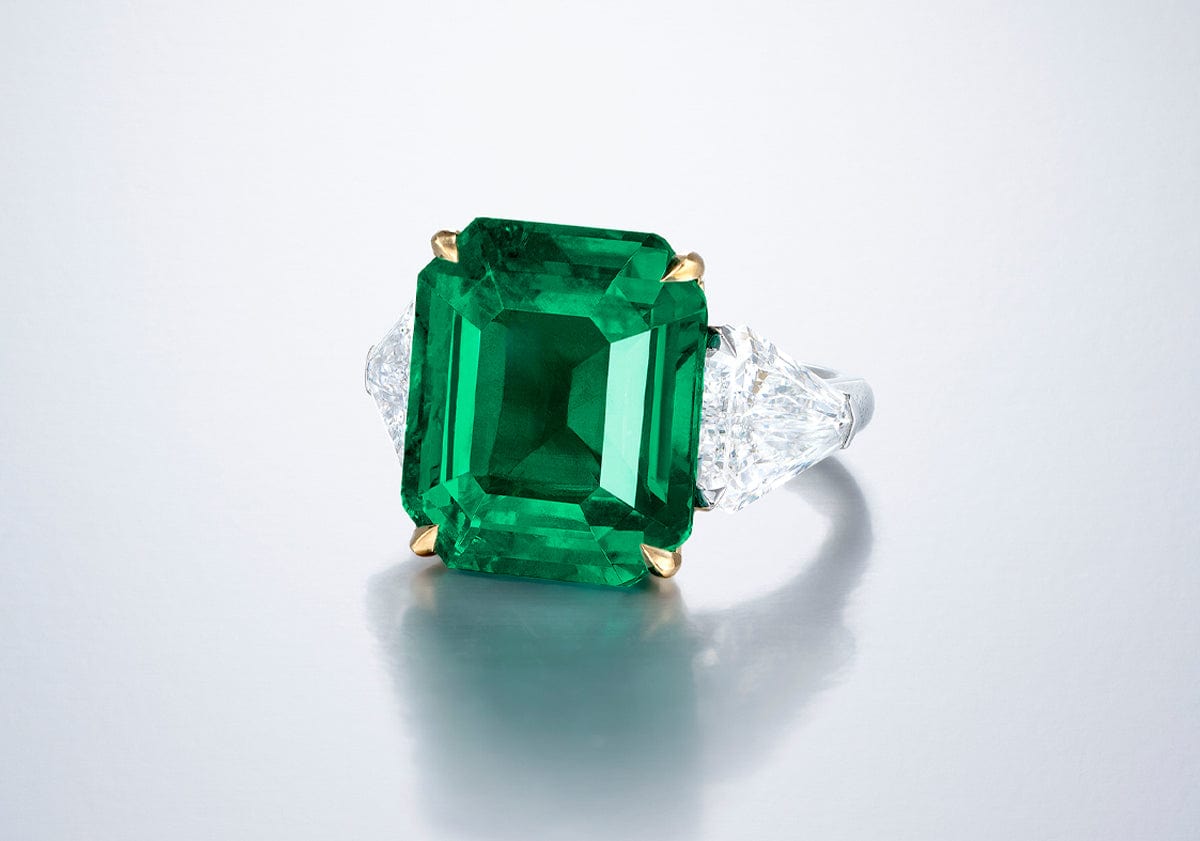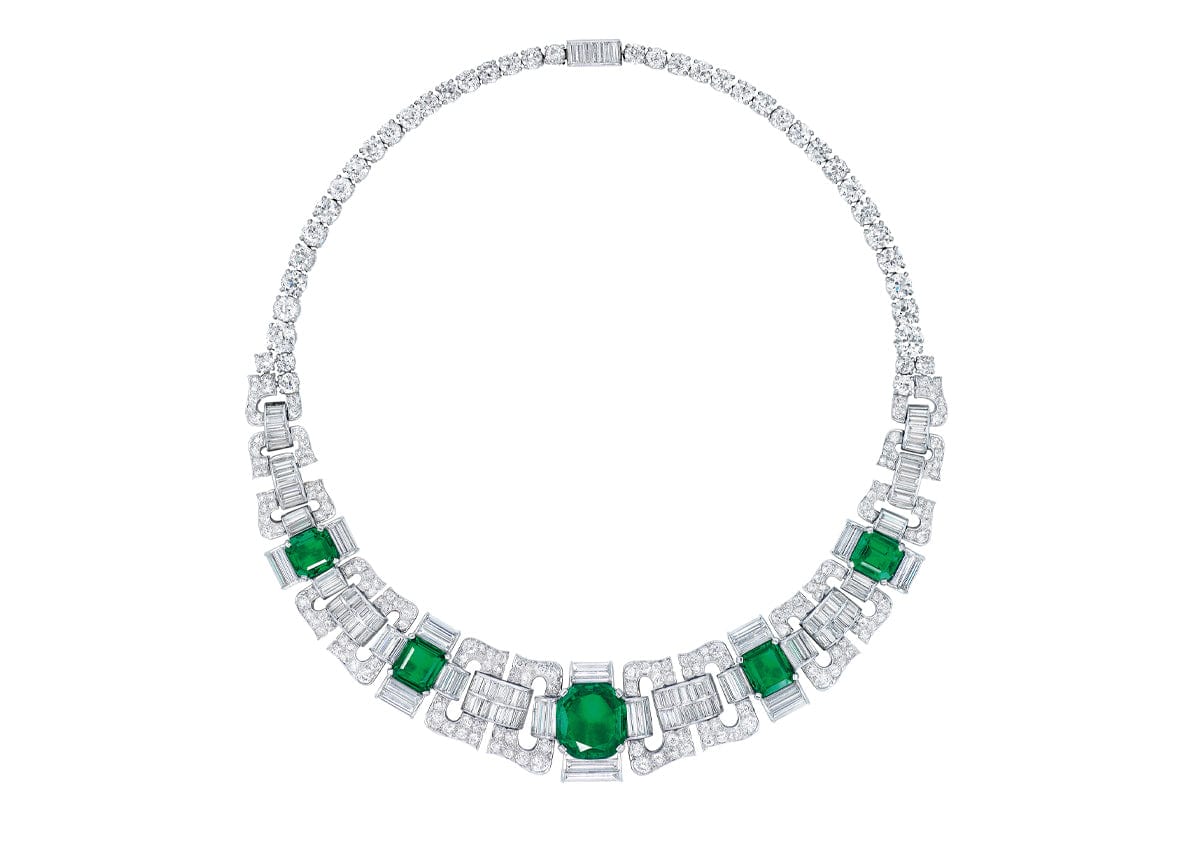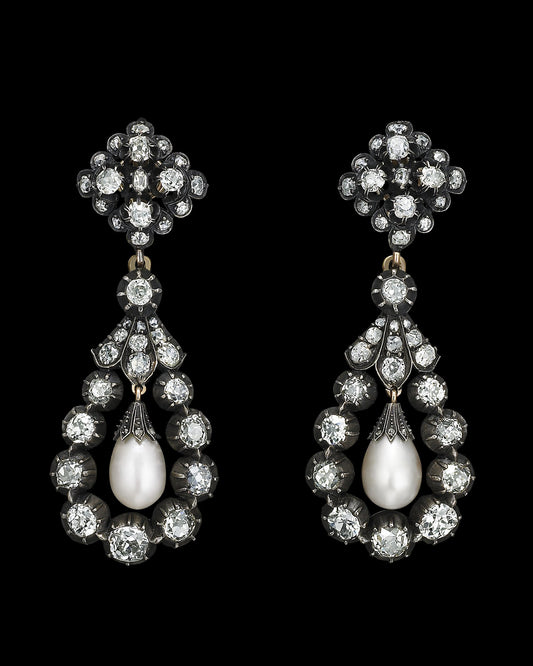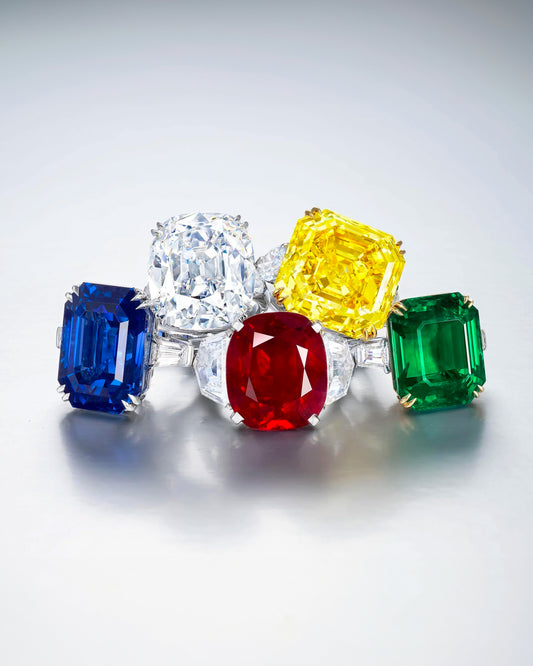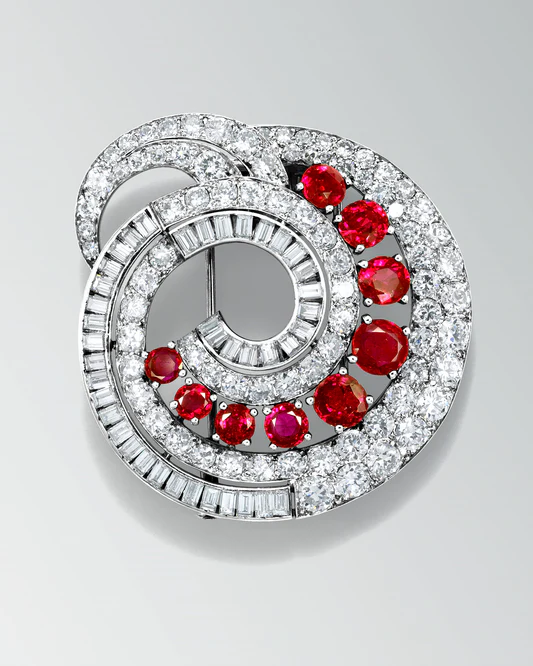
The Enigmatic Beauty
of Old Mine emeralds
Considered the pinnacle of coloured gemstone connoisseurship, Old Mine emeralds are so rare that they are relatively unknown to all but the most experienced and knowledgeable of dealers and collectors. With a history that stretches back more than 500 years, Spanish conquistadors fought long and bloody battles over them. Their captivating glow has also entranced many a Maharaja as well as some of the world’s greatest jewellery collectors, from Barbara Hutton to Elizabeth Taylor.
To understand just how rare a gem-quality Old Mine emerald is without clarity enhancement, we must first define the term. Some jewellers use Old Mine to describe any best-in-class Colombian emerald that is similar in appearance to an antique Old Mine stone, regardless of its age. At Ronald Abram, we use the term in its purest form to refer only to gems that we are confident pre-date modern mining methods and originate from the ancient emerald mines of Colombia. In most cases, the Old Mine emeralds we offer are spared of any clarity enhancement.
The Cantino world map, 1502.
Colombia’s legendary
emerald mines
The history of Colombia’s emerald mines is filled with legend and adventure. Long before the arrival of the Spanish conquistadors to South America in the early 16th century, these beautiful green gemstones were already treasured by the local people. Traded with the Mayans, Incas and Aztecs, they played an important role in religious rites and were also worn as a form of personal adornment. The source of these alluring green gems was deep in the lush mountains of the Andes, in the modern-day Boyacá region of Colombia.
Historians believe the indigenous people mastered the art of emerald mining as early as 500 AD, but it is the conquistadors who are credited with sharing the magnificence of Colombia’s emeralds with the world. They may have been looking for gold, but instead they discovered these enigmatic green gems. What followed was a fight to seize control of the emerald-rich regions. First, they first took over production at the Somondoco mine (now better known as the Chivor mine), followed by the Muzo mine.
By the end of the 16th century, the output of emeralds from both mines was prolific, enabling the conquistadors to send great quantities of emeralds back to the Spanish court of King Charles and Queen Isabella. The crown was so enamoured with their riches that in 1650 they took over the operation of both the Somondoco and Muzo sites, together with Coscuez, another major emerald mine. These mines continued to be controlled by the monarchy until Colombia gained its independence from Spain in 1819, although production dwindled considerably throughout the 17th century.
Quickly setting a new standard for emerald size and quality, these fine emeralds found homes in the treasuries of the European aristocracy. They also made their way to the Ottoman Empire of Turkey and into the hands of the Nizams, Sultans and Maharajas of India and Persia.
Richly represented in museums around the world, these historic Old Mine emeralds of exceptional quality are the stones we seek out
10.36 carat Old Mine Colombian Emerald Ring
How to identify an
Old Mine emerald
None of the established gemstone laboratories currently authenticates Old Mine emeralds. This means that it is impossible to tell whether an emerald is Old Mine in origin from its certificate alone. Instead, you must rely on the integrity and experience of the source you are acquiring it from.
J.J. Abram’s system of authenticating Old Mine emeralds is multi-faceted. Bearing in mind that all emeralds that were mined prior to the 20th century could technically be referred to as Old Mine emeralds, JJ’s method is more nuanced, with provenance, appearance and quality all coming into play.
Old Mine emeralds are generally mounted in jewellery, so establishing the provenance and period of these jewels is a good first indicator of an emerald’s age. Before acquiring the remarkable 10-carat Old Mine emerald pictured here, JJ was able to ascertain that the jewel it was originally set in was purchased more than 70 years ago, based on documentation provided by the family of the stone’s previous owner. Examining it carefully confirmed that it was an antique stone.
Next, it was time to consider its colour and appearance in more detail, with its exceptional vibrancy immediately apparent. Modern emeralds are generally a deeper bluish-green. This emerald was bright and lively, with a lighter yellowish-green tone and most importantly, it glowed from within.
Finally, an antique emerald must be outstanding to gain Old Mine status at Ronald Abram. We believe that only the finest and most collectible stones of yesteryear, free of clarity enhancement, are worthy of collection. This 10-carat gem undoubtedly fell into this category.
Art Deco Old Mine Colombian Emerald & Diamond Necklace, circa 1935
An astute acquisition for collectors
There’s only a finite supply of Old Mine emeralds. Those that do exist are already set in jewels and hidden away in safes around the world. It can take years to find ones that meet our stringent standards which is why they are considered some of our most treasured possessions.
Old Mine emeralds present an excellent investment opportunity. As they’re inherently rarer than any other emerald, few collectors are aware of them. To us, they are placed in the same category as Kashmir sapphires, and we are confident they will only increase in value in the future.
Even after dark, an Old Mine emerald glows green, enthralling all those who set eyes upon it. At Ronald Abram, we are proud to be able to educate our clients on the historical significance of these extraordinary gems and celebrate them in single stones rings that amplify their magnificent natural beauty.
To arrange a viewing of our Old Mine Emerald Collection please contact us.
